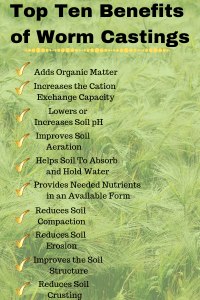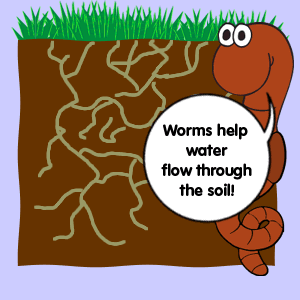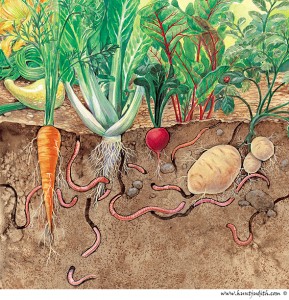The 7-Minute Rule for North Carolina Worms
Wiki Article
North Carolina Worms Fundamentals Explained
Table of Contents6 Easy Facts About North Carolina Worms ExplainedAbout North Carolina WormsThe Best Guide To North Carolina WormsAbout North Carolina Worms
Instance: 1-gallon of worm castings to 4 gallons of potting mix. 1/2 cup in the bottom of the growing hole for smaller sized plants. 1 cup for larger plants.
The enhancement of tea can additionally include raised microbial biomass to your dirt. You can always side-dress your plants with worm spreadings at any moment. Just remember, the microbes will die if revealed to UV rays (Sunlight), so make certain to cover the spreadings with an inch or so of soil.
This frustrated them for several years up until the testing methods became much better. They found that plant development and wellness showed a Normal curve. It would obtain better(with more spreadings), level off, and after that decline. They were mystified. They ultimately discovered that excess plant-growth hormonal agents were the culprit. A lot of worm spreadings would speed up the development to a speed that the plant can not recoup from.
See This Report about North Carolina Worms
I have clarified the merits of worm spreadings for regarding 2000 words. Worm castings are no different. It takes time to create top quality worm spreadings.Worm castings absolutely set you back more than chemical plant foods. Worm spreadings are on the cheaper end of natural fertilizers. (50 gallons per year) It is a much harder and very pricey investment to produce huge amounts of worm spreadings.

Actually, creating a healthy dirt may be the biggest benefit of worm spreadings. Healthy dirt was gone over and exactly how important this has actually come to be to everybody. The top 10 benefits of worm castings were also offered. We went over worm castings NPK and likewise the proper nutrient evaluation that must apply to worm spreadings.
All about North Carolina Worms
We spoke regarding some of the downsides linked with worm castings. I covered a whole lot of product in this post.The upright burrows are generally open, although the worms cover the leading with residue and excrement. Roots require oxygen for their development, whereas they create carbon dioxide that needs to leave the soil.
Earthworms enhance porosity by two devices: (1) by producing permanent burrows, and (2) by boosting soil aggregation. Gathering is boosted by the mixing of dirt and raw material in the earthworms' guts. Lake James Bait. These highly secure accumulations are deposited by some earthworms in their burrows, and by others at the surface area of the dirt


In one more study, earthworms were estimated to take in 4 to 10 percent of the top 6 inches of the soil yearly. Dirt compaction minimizes the porosity of the dirt.
4 Simple Techniques For North Carolina Worms
Typical earthworm populaces can quickly take in 2 lots of completely dry issue per acre each year, partially digesting and blending it with dirt. The relevance of earthworms to mix surface deposit with dirt comes to be extremely clear in soils that do not have any kind of earthworms. Most of our Pennsylvania dirts have at the very least some earthworms, and the impact of their complete lack, therefore, can not be noted.(https://www.aquarius-dir.com/North-Carolina-Worms_462181.html)In these soils, the formation of topsoil with affordable raw material material did not happen, resulting in poor crop growth. Once the reason was developed, the federal government of the Netherlands began a project to introduce earthworms. After the intro of the earthworms, a dark topsoil layer was created, and crop growth boosted significantly.
They live primarily from partly broken down organic matter that is already integrated in the dirt. They eat their way through the dirt, developing horizontal burrows that they fill up with their excrement. These species ingest huge amounts of soil that they blend with absorbed crop residue in their guts. or anecic types live in long-term vertical burrows that can be 5 or 6 feet deep.
Their burrows remain open, although they cover the leading with crop residue that they pull to the entry. These types ingest significant quantities of dirt that they combine with absorbed residue in their intestines. Their waste matter is mostly deposited at the surface area of the soil. The nightcrawler Lumbricus terrestris is one of the most famous member of this group.
Report this wiki page